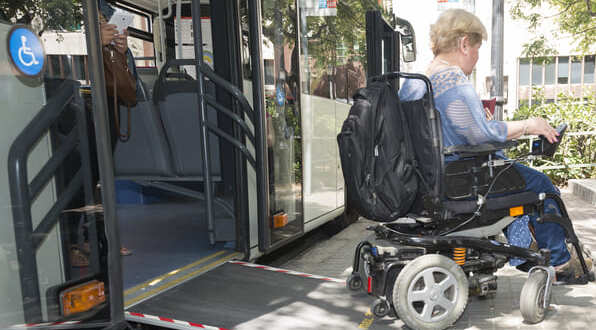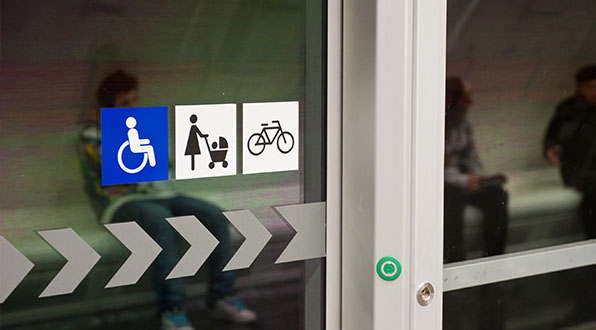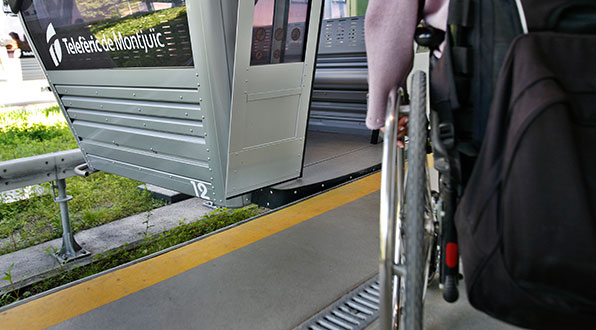Accessibility and reduced mobility
We are driving towards universal access to the metro network
Since 1992, the stations on the metro network that have been constructed or renovated, all have guaranteed accessibility. We are continuing with work to make the metro more accessible for everyone by progressively adapting the facilities, implementing a voice navigation system using distributors throughout the entire system, route indicators for blind people in many stations and the increasing use of light-operated devices to close train doors. From 2012 there has been an embossed map available of the metro network and a metro guide in braille, uptdated on 2024, at Punt TMB information points and customer service centers.
The entire Barcelona metro network is accessible except for some specific stations (11 out of a total of 165 stations).
Stations due to be adapted:
L1: Plaça de Sants, Espanya, Urquinaona and Clot
L4: Verdaguer, Urquinaona and Ciutadella-Vila Olímpica
L5: Virrei Amat, Maragall, Verdaguer and Plaça de Sants
Brownse through the information on every line and its stations by using the metro map.
Connections between non-adapted lines/operators:
Catalunya L1/Rodalies (commuter trains) - L3/FGC (the connection between L1 and Rodalies to L3 and FGC is not accessible in either direction).
Passeig de Gràcia L2/L4 - L3/Rodalies (commuter trains)/Renfe (mainline trains). (The connection between L2 and L4 to L3 and Rodalies/Renfe is not accessible in either direction).
Clot L1 - L2 (the connection between L1, non-accessible station, and L2, accessible station, is not accessible in either direction).
100% accessible bus network
The entire bus network has been fully adapted for people with reduced mobility (PRM) since 2007. Buses of the fleet have reserved seats inside and an access ramp to the vehicle.
With the new buses incorporated in 2020, people with reduced mobility have improved accessibility, such as wide doors and a ramp that adjusts to doors opening, in order to facilitate manoeuvrability of users in wheelchairs. The most important improvement is two opposite spaces, reserved for wheelchairs, scooters and strollers. The safety of seated users is also guaranteed, with a folding side retainer bar and adjustable straps.
Our buses have also been made accessible for people with visual impairment: there are visual warning systems outside vehicles, with an info-accessibility device. The ticket validators inside the vehicles have signalling, which through color contrast, also in braille, can read the identification number of the bus in which they are travelling.
Access the bus map page.
Scooter access for the metro and bus networks
The access of mobility scooters to the metro and the bus is regulated, as is the safety of users and other passengers, ensuring good coexistence.
Other accessible TMB installations
The Barcelona Bus Turístic has the same facilities as the rest of the bus fleet on its lower deck and now has an audio induction loop for deaf people, with an audiophone that enables them to hear the audioguide more clearly.
Since 2007, the Montjuïc Cable Car has been a totally adapted facility. In 2008 it was awarded the universal accessibility certification.
Technology to improve accessibility and autonomy of public transport users with visual impairment
On the Accessibility tools page you will find the solutions we design to facilitate accessibility in the TMB transport network.




















